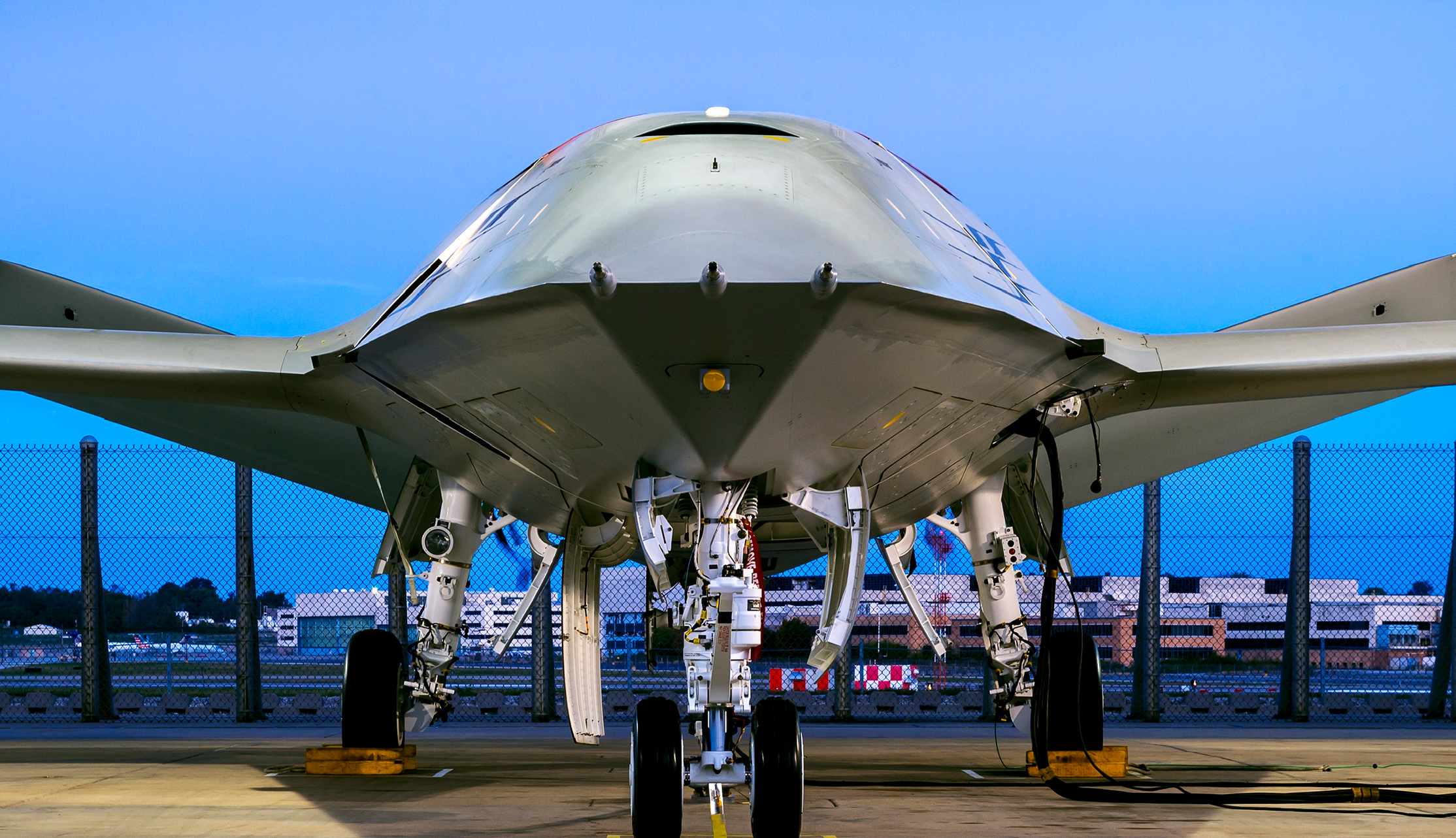Navy Picks Boeing to Build MQ-25A Stingray Carrier-Based Drone
Boeing will build the first unmanned aircraft to be a permanent part of the U.S. Navy’s carrier air wing, according to a Thursday Pentagon contract announcement.
Under the $805 million contract, Boeing will “provide the design, development, fabrication, test, verification, certification, delivery, and support of four MQ-25A unmanned air vehicles, including integration into the carrier air wing to provide an initial operational capability to the Navy.”
The Navy plans for the first four Stingrays to achieve initial operational capability on carrier decks in 2024.
The new tanker could double the strike range of the carrier air wing, with the MQ-25A delivering up to 15,000 pounds of fuel at 500 nautical miles. The contract award comes as the Navy is struggling to keep up the readiness of its F/A-18E/F Super Hornet fleet, which also serves as a tanker for the air wing. Anywhere from 20 to 30 percent of Super Hornet flight hours are devoted to aerial refueling operations, and cutting those hours is part of Chief of Naval Operations Adm. John Richardson’s drive to get MQ-25s to the fleet.
“[Richardson’s] number-one priority is the schedule. Price is number two. He wants this airplane out there quickly,” Boeing MQ-25A program manager and former Navy program executive officer for tactical aircraft B.D. Gaddis told reporters in April...
Lockheed Martin and General Atomics had also submitted bids for the MQ-25A work. Northrop Grumman pulled out of the competition in October.
The award marks the end of a dozen years of requirements churn in how the service would introduce unmanned aircraft onto carrier flight decks. The final Stingray concept is more modest than the service’s vision for the first carrier UAVs in 2006.
Then, the Navy wanted a stealthy strike platform that could extend the lethal reach of the carrier air wing to hundreds of miles beyond the range of the current crop of aircraft and the physical limitations of pilots.
The service pursued development of an Unmanned Combat Air System that could carry the same internal payload as the then-under-development F-35C Lightning II Joint Strike Fighter and penetrate enemy air defenses to strike targets thousands of miles from a carrier...
Based on a set of late 2012 requirements, Naval Air Systems Command worked on the intelligence, surveillance and reconnaissance oriented Unmanned Carrier Launched Airborne Surveillance and Strike (UCLASS) until then-Deputy Secretary of Defense Bob Work undertook a comprehensive review of the Pentagon’s unmanned aircraft portfolio.
Following the review, the Navy announced what was the UCLASS program would be focused on solely the tanking mission as part of the Pentagon’s broader Fiscal Year 2017 budget proposal...
Boeing’s MQ-25 unmanned aircraft system is completing engine runs before heading to the flight ramp for deck handling demonstrations next year. The aircraft is designed to provide the U.S. Navy with refueling capabilities that would extend the combat range of deployed Boeing F/A-18 Super Hornet, Boeing EA-18G Growler, and Lockheed Martin F-35C fighters. Boeing photo.
https://news.usni.org/2018/08/30/navy-picks-boeing-build-mq-25a-stingray-carrier-based-drone




